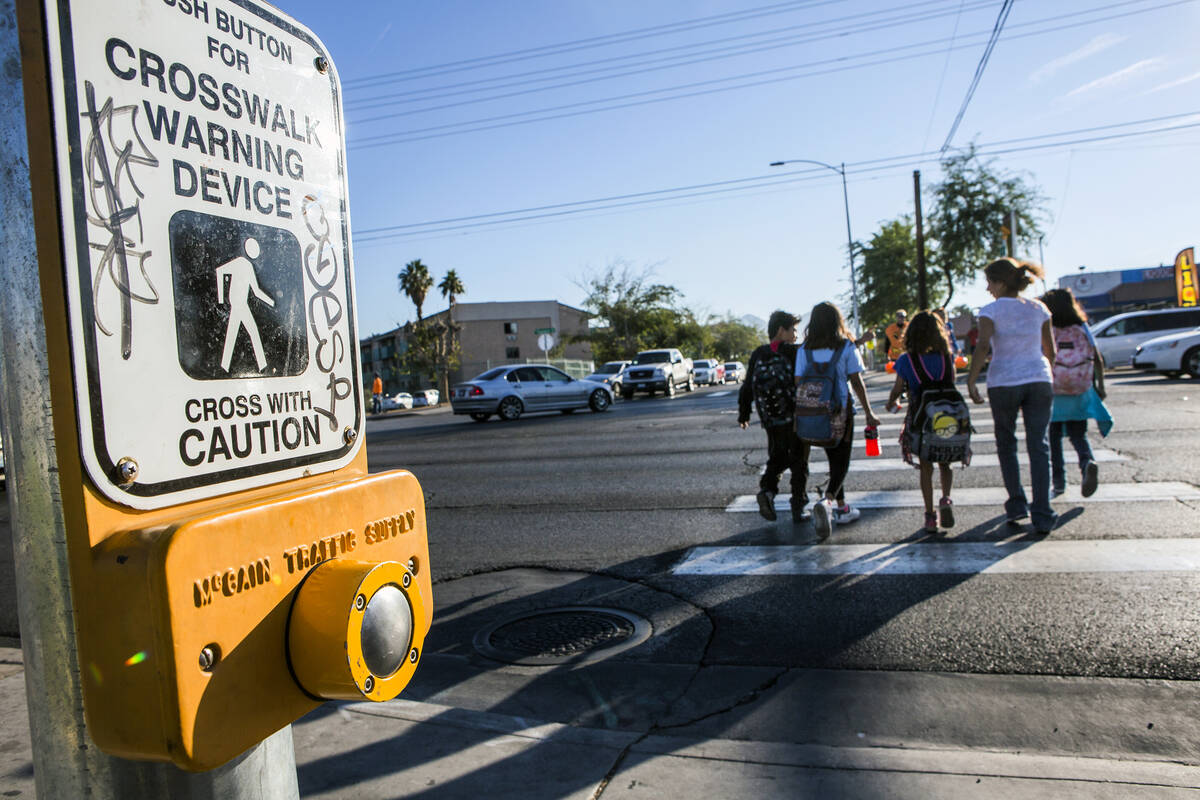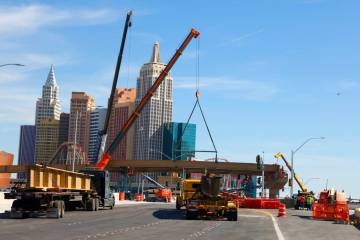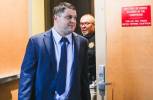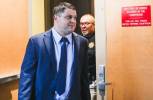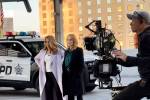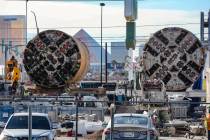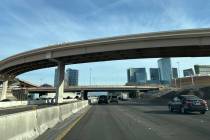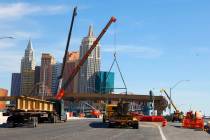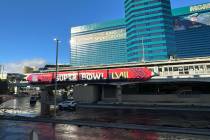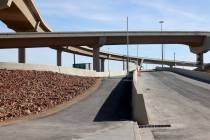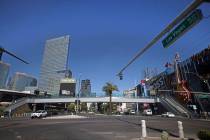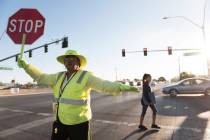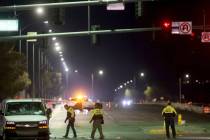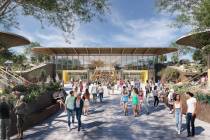Every day should be treated as National Pedestrian Safety Month
Although it’s something that should be observed every day, October is pedestrian safety month.
With the deaths of vulnerable road users always a concern of area officials, Las Vegas Valley motorists shouldn’t need a designated month to ensure the safety of every pedestrian.
Between 2018 and 2021, there were 245 pedestrians killed in vehicle-related crashes in Southern Nevada. Or an average of 61 deaths per year.
Through last week there have been unofficially 52 pedestrian deaths on Clark County roads, with the always dangerous October-December months to go, according to Erin Breen, coordinator of the Traffic Safety Coalition at UNLV.
“Year after year we keep talking about these crazy increases. … I think that the difference is I have more hope than I’ve had in at least 20 years,” Breen said. “Because things seem to be finally turning a curve on what we can do about it.”
Some of those mitigation tactics include complete streets plans, where there’s a separation between travel lanes and bike lanes, wider sidewalks and other safety enhancements. Boulder Highway, where nearly 10 percent of pedestrian deaths in the state occur, will undergo a complete street makeover. Stewart Avenue in downtown Las Vegas also is gearing up for a similar makeover.
There’s also a pilot program underway, testing the impacts of not allowing flashing yellow turn signals for drivers making left-hand turns at select intersections when a pedestrian has pressed the walk button at a crosswalk that crosses into that traffic lane’s path.
“Instead of just saying ‘There’s nothing that can be done,’ people are really taking a hard look at the kinds of things that have worked in other countries and other parts of the United States,” Breen said.
Aside from fatalities, there have been 361 lives altered due to life-threatening or incapacitating injuries pedestrians in Clark County suffered due to motor vehicle crashes between 2108-2020, the latest data available revealed.
School zones have also proved to be dangerous for some of the most vulnerable road users: students. A Review-Journal investigation revealed over 240 school-age children were injured within a quarter mile of a Clark County School District campus between 2015 and 2019. Thirty of those instances resulted in serious injury, with four resulting in death.
In Depth: Unreliable pedestrian crash tracking near schools leaves parents, officials in the dark
Clocks falling back an hour on Nov. 6, when Daylight Saving Time ends, means less daylight, which is an increased danger for pedestrians and other vulnerable road users.
When the topic of pedestrian safety comes up, vulnerable road users and motorists point fingers at each other saying the other side is to blame.
In some cases, motorists are at fault, while other times mistakes pedestrians make on the road cost them their lives or lead to serious injury.
No matter who is to blame, it’s everyone’s responsibility to do everything they can to ensure everyone using Las Vegas Valley roads and sidewalks are as safe as they can be.
“I think there’s lots of blame to go around,” Breen said. “We are sure it’s not us and that is part of the problem. People forget what the rules of the road are. … As we very well know, the pedestrian loses that duel every time.”
Here are a few refreshers of those rules for both drivers and pedestrians.
Drivers:
Slow down: The top thing any driver can do is travel the posted speed limit. This is especially true in school zones. School zones are often between 15 mph and 25 mph. At 20 mph, 15 percent of pedestrians struck by a vehicle will not survive. A 5 percent reduction in speed results in a 30 percent reduction in fatal outcomes.
Pay attention: Don’t drive distracted. It takes a split-second of distraction for a crash with a pedestrian to occur. If you need to use your phone, pull over at a safe spot to do so.
No U-turns: Drivers aren’t allowed to make a U-turn in a school zone. Disallowing that cuts potential conflicts in half.
Be extra cautious in school zones: Expect children to be unpredictable, as they might not be as familiar with the rules of the road. Be the adult and don’t let them find out the hard way.
Do not block driveways: Or park within 20 feet of a crosswalk. This removes potential sight barriers between drivers and pedestrians.
Pedestrians:
Make eye contact: Pedestrians making eye contact with a driver ensures they know you’re there and are about to cross.
Cross at crosswalks or intersections: Doing so enhances the ability for a driver to see you. Darting out in the middle of the road is dangerous and should be avoided.
Walk at a normal pace: Don’t run or walk slowly. Doing so will allow drivers in both directions to see you in adequate time and not irritate a driver if it appears a pedestrian is going slower than usual.
Wear bright or white clothes: If you stand out, you’re easier to see. If you can’t wear bright clothes, make sure you have reflective gear on, especially at night.
Never assume: If a driver’s headlights are on, it’s best to go as if they can’t see you. Be extra cautious and wait, to assure they have stopped for you.
Use the sidewalk: Don’t walk in the street. If there isn’t a sidewalk, walk facing traffic.
Travel in groups: When possible, walk with others. The more people that are walking at one time means the easier it is for a motorist to be aware you’re there.
Contact Mick Akers at makers@reviewjournal.com or 702-387-2920. Follow @mickakers on Twitter. Send questions and comments to roadwarrior@reviewjournal.com.



